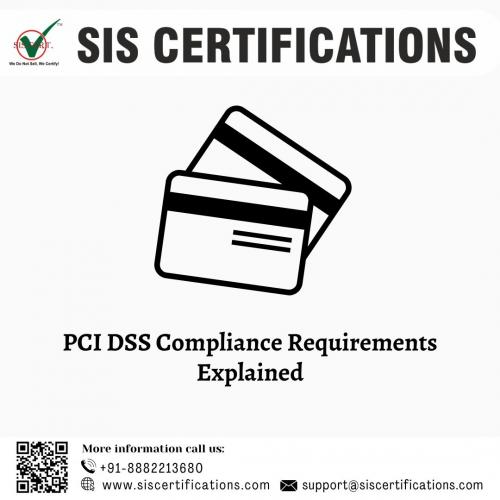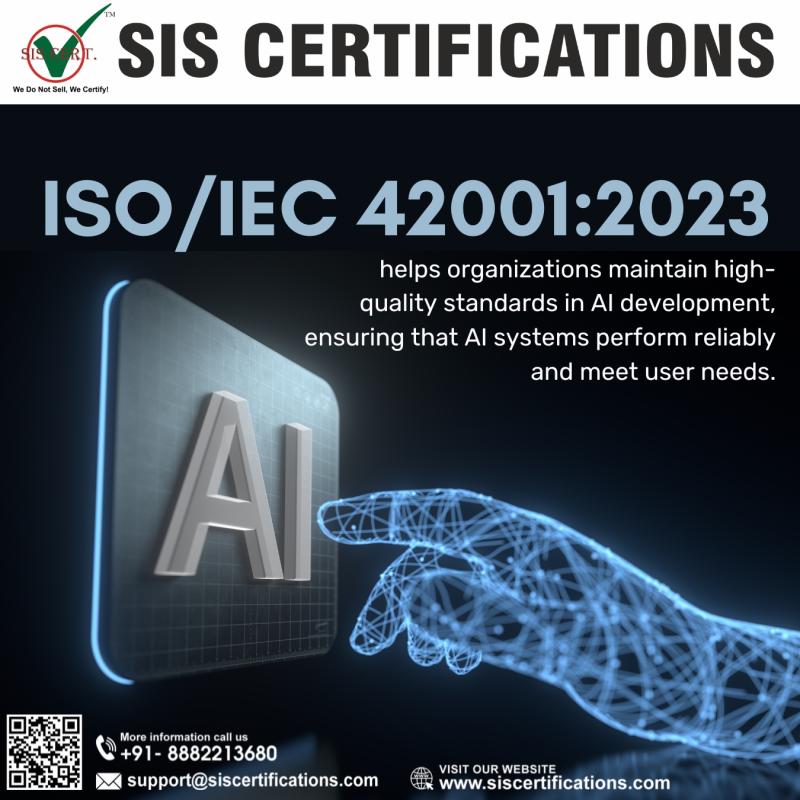PCI DSS Compliance Requirements Explained - SIS Certifications

In today's
digital age, ensuring the security of cardholder data is paramount for any
organization that handles payment card transactions. The Payment Card Industry
Data Security Standard (PCI DSS) sets the bar for protecting this sensitive
information. This article delves into the PCI DSS compliance requirements and
highlights the importance of ISO
certification for AI in enhancing data security.
Understanding
PCI DSS
PCI DSS Compliance
is a set of security standards designed to ensure that all companies that
accept, process, store, or transmit credit card information maintain a secure
environment. The standard is maintained by the PCI Security Standards Council,
which was founded by major credit card companies like Visa, MasterCard,
American Express, Discover, and JCB.
Core PCI DSS
Requirements
PCI DSS
comprises 12 main requirements, which are grouped into six categories. These
requirements provide a framework for a secure payment environment:
Build and
Maintain a Secure Network and Systems
Requirement 1:
Install and maintain a firewall configuration to protect cardholder data.
Requirement 2:
Do not use vendor-supplied defaults for system passwords and other security
parameters.
Protect
Cardholder Data
Requirement 3:
Protect stored cardholder data.
Requirement 4:
Encrypt transmission of cardholder data across open, public networks.
Maintain a
Vulnerability Management Program
Requirement 5:
Protect all systems against malware and regularly update anti-virus software or
programs.
Requirement 6:
Develop and maintain secure systems and applications.
Implement
Strong Access Control Measures
Requirement 7:
Restrict access to cardholder data by business need to know.
Requirement 8:
Identify and authenticate access to system components.
Requirement 9:
Restrict physical access to cardholder data.
Regularly
Monitor and Test Networks
Requirement 10:
Track and monitor all access to network resources and cardholder data.
Requirement 11:
Regularly test security systems and processes.
Maintain an
Information Security Policy
Requirement 12:
Maintain a policy that addresses information security for all personnel.
Scope
Determination
Identify all
system components that are in scope for PCI DSS. This includes any system that
stores, processes, or transmits cardholder data.
Self-Assessment
Questionnaire (SAQ)
Depending on
the size and type of your business, you may need to complete a Self-Assessment
Questionnaire (SAQ) to assess your compliance.
Gap Analysis
Conduct a gap
analysis to identify where your current practices diverge from PCI DSS
requirements.
Remediation
Plan
Develop and
implement a remediation plan to address any gaps identified during the
assessment.
On-Site
Assessment
For larger
organizations, an on-site assessment by a Qualified Security Assessor (QSA) may
be necessary to validate compliance.
Compliance
Reporting
Submit the
required documentation to the acquiring bank and the payment card brands. This
includes the SAQ or Report on Compliance (RoC), and the Attestation of
Compliance (AoC).
ISO
Certification for AI and PCI DSS
As
organizations increasingly integrate artificial intelligence (AI) into their
operations, ensuring the security of AI systems is becoming crucial. Achieving
ISO certification for AI can complement PCI DSS compliance by providing
additional layers of security and governance.
Key Benefits
of ISO Certification for AI
Enhanced
Security
ISO
certification for AI ensures that AI systems adhere to rigorous security
standards, protecting against data breaches and cyber threats.
Improved
Risk Management
ISO standards
provide a framework for identifying and mitigating risks associated with AI,
enhancing overall security posture.
Regulatory
Compliance
Achieving ISO
certification demonstrates a commitment to regulatory compliance, building
trust with stakeholders and customers.
Operational
Efficiency
ISO standards
promote best practices for managing AI systems, leading to improved operational
efficiency and reduced downtime.
Integrating ISO
Certification with PCI DSS
Comprehensive
Security Framework
Combining PCI
DSS and ISO certification for AI creates a comprehensive security framework
that addresses both payment data and AI system security.
Risk-Based
Approach
ISO standards
emphasize a risk-based approach to security, which aligns well with the risk
management practices required by PCI DSS.
Continuous
Improvement
Both PCI DSS
and ISO standards advocate for continuous improvement, ensuring that security
measures evolve to address emerging threats.
Enhanced
Trust and Credibility
Organizations
that achieve both PCI DSS compliance and ISO certification for AI demonstrate a
strong commitment to security, enhancing trust and credibility with customers
and partners.
Conclusion
Achieving PCI
DSS compliance is essential for any organization that handles payment card
transactions, providing a robust framework for protecting cardholder data. By
understanding and implementing the core requirements of PCI DSS, businesses can
create a secure payment environment that mitigates risks and builds customer
trust.
In the era of
AI, achieving ISO certification for AI adds an additional layer of security,
ensuring that AI systems are governed by stringent standards. Integrating PCI
DSS compliance with ISO certification for AI in Saudi Arabia creates a comprehensive security
strategy that addresses both payment data and AI system security.
For
organizations in Saudi Arabia and beyond, understanding and implementing these
compliance requirements is crucial for maintaining a secure and trustworthy
business environment. As technology continues to evolve, staying ahead of
regulatory requirements and adopting best practices for security will be key to
long-term success.







Comments